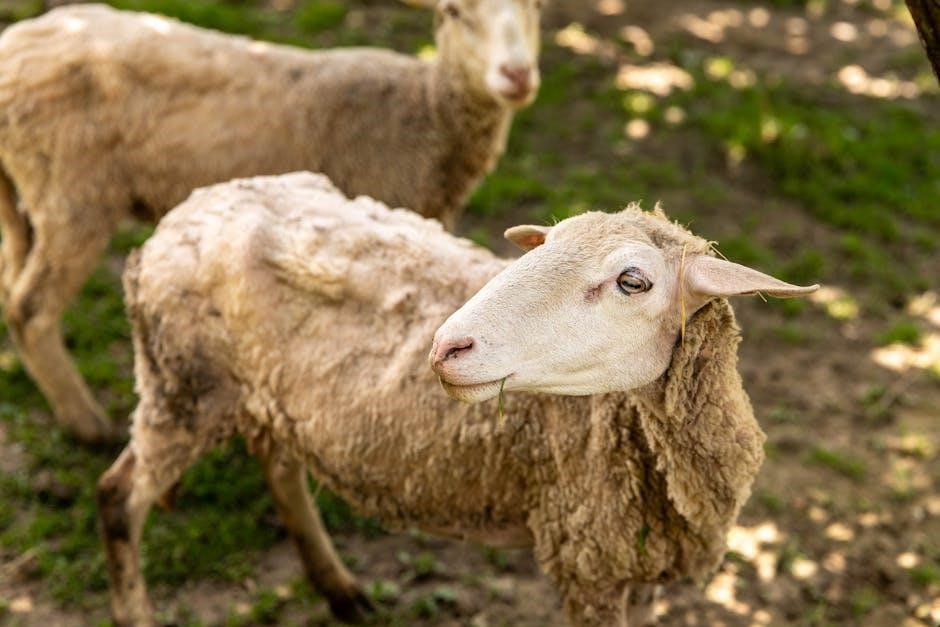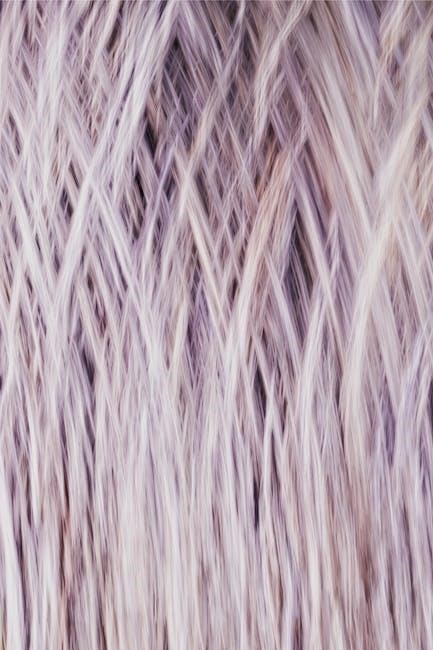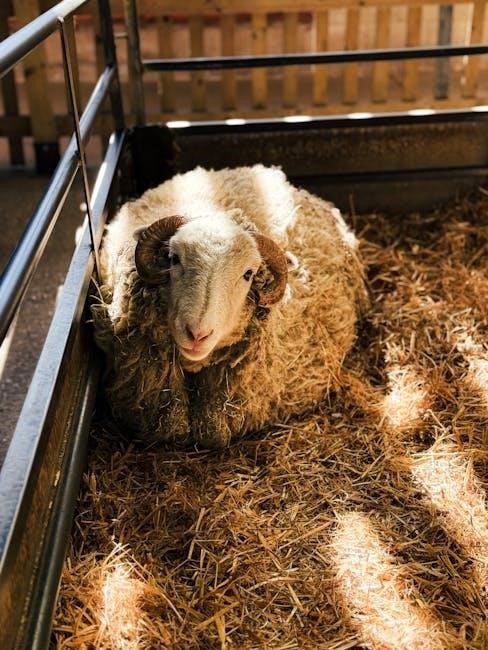Wool is a natural fiber requiring careful washing to maintain its softness and warmth. Proper techniques ensure cleanliness without damaging the fabric, keeping wool garments fresh and durable.
Importance of Proper Wool Care
Importance of Proper Wool Care
Proper wool care is essential to preserve the natural fibers, ensuring softness, warmth, and durability. Wool fibers can felt or shrink if exposed to heat or harsh agitation, ruining the fabric. Regular washing without proper techniques may lead to pilling or loss of texture. Cleaning wool garments correctly maintains their insulation properties and prevents odors. Following care instructions helps extend the lifespan of wool items, avoiding damage from machine washing or high temperatures. Using mild detergents designed for wool prevents oil buildup and keeps the fabric breathable; Proper care also maintains the garment’s shape and color vibrancy. Neglecting these steps can result in irreversible damage, making the garment less comfortable and less appealing. Taking the time to wash and dry wool correctly ensures it remains a luxurious and long-lasting addition to your wardrobe.

Pre-Washing Preparation
Pre-washing preparation involves checking care labels, turning garments inside out, and addressing stains to ensure safe and effective cleaning of wool fabrics without damage.
Checking the Care Label
Checking the care label is the first step in wool washing. It provides specific instructions tailored to the garment’s material and construction. Look for symbols indicating whether hand washing, machine washing, or specific cycles are recommended. Some labels may specify cold water only or advise against certain detergents. Ignoring these instructions can damage the wool fibers, leading to shrinkage, felting, or loss of texture. Pay attention to symbols like a hand basin for hand washing or a machine with a delicate cycle. If unsure, always opt for the gentlest method. The care label ensures you use the right techniques to preserve the garment’s quality and longevity. Following these guidelines helps maintain the softness, shape, and warmth of wool fabrics.
Turning Wool Garments Inside Out
Turning wool garments inside out before washing is a simple yet effective precaution. This step protects the outer fabric from friction and abrasion, reducing the risk of pilling or damage. It also helps prevent dirt and stains from setting deeper into the fibers. By minimizing direct contact with washing agents and machinery, turning garments inside out preserves their appearance and texture. This method is especially recommended for machine washing, where agitation can be harsher. Additionally, it helps maintain the garment’s color and finish, preventing fading or discoloration. Always ensure buttons and zippers are closed to avoid snagging. Turning wool garments inside out is a crucial step in maintaining their quality and extending their lifespan. This practice is widely recommended for both hand and machine washing methods.
Removing Stains Before Washing
Addressing stains on wool garments before washing is essential to ensure they don’t set in and become difficult to remove. Gently blot the stained area with a clean cloth to absorb excess dirt or liquid. Avoid rubbing, as it can damage the wool fibers. For most stains, apply a small amount of mild wool detergent or a solution of cool water and white vinegar directly to the affected area. Let it sit for a few minutes to allow the solution to penetrate. Do not soak the garment excessively, as wool fibers can weaken when saturated for too long. After pre-treating, proceed with washing as usual. Never use harsh chemicals or hot water, as they can harm the wool. Always check the care label for specific stain removal recommendations. Treating stains promptly ensures better results and preserves the garment’s quality.

Washing Methods
Wool garments can be washed by hand or machine using cold water and mild detergent. Always check the care label for specific washing recommendations to ensure safety.
Hand Washing Wool Garments
Hand washing is the preferred method for delicate wool items. Fill a basin with cold water, add a mild wool detergent, and gently agitate the water. Submerge the garment, letting it soak for about 15 minutes. Avoid rubbing or wringing, as this can damage the fibers. Instead, gently swish the garment through the water. Rinse thoroughly in cold water to remove all soap residue. Gently squeeze out excess water without wringing; Reshape the garment to its original dimensions while damp. Lay it flat on a clean towel to air dry away from direct sunlight or heat. This method ensures the wool retains its softness and texture, maintaining its quality over time.
Machine Washing Wool Garments

Machine washing wool garments is possible if done carefully. Always check the care label for specific instructions, as some wool items may have a wool or delicate cycle. Turn garments inside out to protect them from friction. Use a mesh laundry bag for added protection. Select a cold water setting (maximum 30°C) and a low spin cycle to prevent damage. Choose a gentle, wool-specific detergent to avoid harming the fibers. Avoid overloading the machine, as this can cause stretching or felting. After washing, reshape the garment while damp and lay it flat to air dry. Never tumble dry wool, as heat can shrink or felt the fibers. Machine washing is convenient but requires caution to maintain the quality and texture of wool.

Drying and Post-Washing Care
Allow wool garments to air dry away from direct sunlight. Reshape while damp and lay flat to maintain their original form. Avoid wringing or twisting the fabric.
Reshaping Wool Garments After Washing

Reshaping wool garments after washing is crucial to maintain their original form and fit. Lay the damp garment flat on a clean, dry towel, smoothing out any wrinkles gently. Ensure the front and back are symmetrical, aligning buttons and seams properly; Avoid hanging or twisting the garment while wet, as this can stretch or misshape the wool fibers. Allow the garment to air dry naturally, away from direct sunlight, which can cause shrinking or discoloration. Once dry, the wool will retain its shape and softness. Proper reshaping ensures the garment remains comfortable and maintains its aesthetic appeal for future use.
Air Drying Wool Clothes
Air drying wool clothes is essential to preserve their quality and texture. After washing, gently remove excess water without wringing or twisting, as this can stretch or felt the wool. Lay the garment flat on a clean, dry towel, reshaping it to its original dimensions. Avoid direct sunlight, as it can cause fading or shrinkage. Instead, place the garment in a shaded, well-ventilated area, allowing it to dry slowly and naturally. Do not hang wool clothes to dry, as gravity may cause stretching. Air drying ensures wool fibers remain soft, resilient, and retain their natural warmth. This method also helps prevent pilling and maintains the garment’s shape, ensuring long-lasting comfort and appearance.

Proper wool washing techniques ensure longevity and maintain the natural softness of wool garments. Gentle care preserves their quality and appearance, making them a lasting investment.
Key Tips for Maintaining Wool Quality
To preserve the softness and durability of wool garments, always follow care labels and use cold water with mild detergents. Avoid machine washing unless specified, as it may damage fibers. Gently hand wash or use a delicate cycle, never wring or twist wool items. Reshape damp garments to maintain their form and air dry away from direct sunlight. Storing wool clothes in a cool, dry place prevents moth damage. Regular brushing can help remove dirt and prevent pilling. Allow wool garments to rest between wearings to recover their shape. By following these tips, wool textiles remain soft, warm, and long-lasting, ensuring they stay in excellent condition for years.
